Last year, the China Aerospace Science and Technology Corporation, or CASC, rolled out a new drone design called the FH-97 that looked to be at least heavily inspired by U.S. drone maker Kratos’ XQ-58A Valkyrie. Now, the company has rolled out a model of an FH-97A that is a dead ringer for the Airpower Teaming System loyal wingman drone, now known as the MQ-28 Ghost Bat. Boeing’s Australian subsidiary developed Ghost Bat first for the Royal Australian Air Force, but the U.S. Air Force has also now acquired at least one example ostensibly to support research and development and test and evaluation efforts.
Pictures have emerged on social media reportedly showing a model of the FH-97A at a pavilion CASC has set up at this year’s Zhuhai Airshow, which officially opens next week. Formally known as the China International Aviation & Aerospace Exhibition, this show is typically held in even years. Chinese aerospace and defense contractors regularly use the event as an opportunity to unveil new and otherwise new aircraft and other systems, as well as aspirational concepts.
What, if anything, the FH-97A design shares with the FH-97 that was displayed at the Zhuhai Airshow last year – held in 2021 to make up for the cancellation of the 2020 show due to the COVID-19 pandemic – is unclear. The FH-97 had distinct similarities to the Kratos XQ-58.
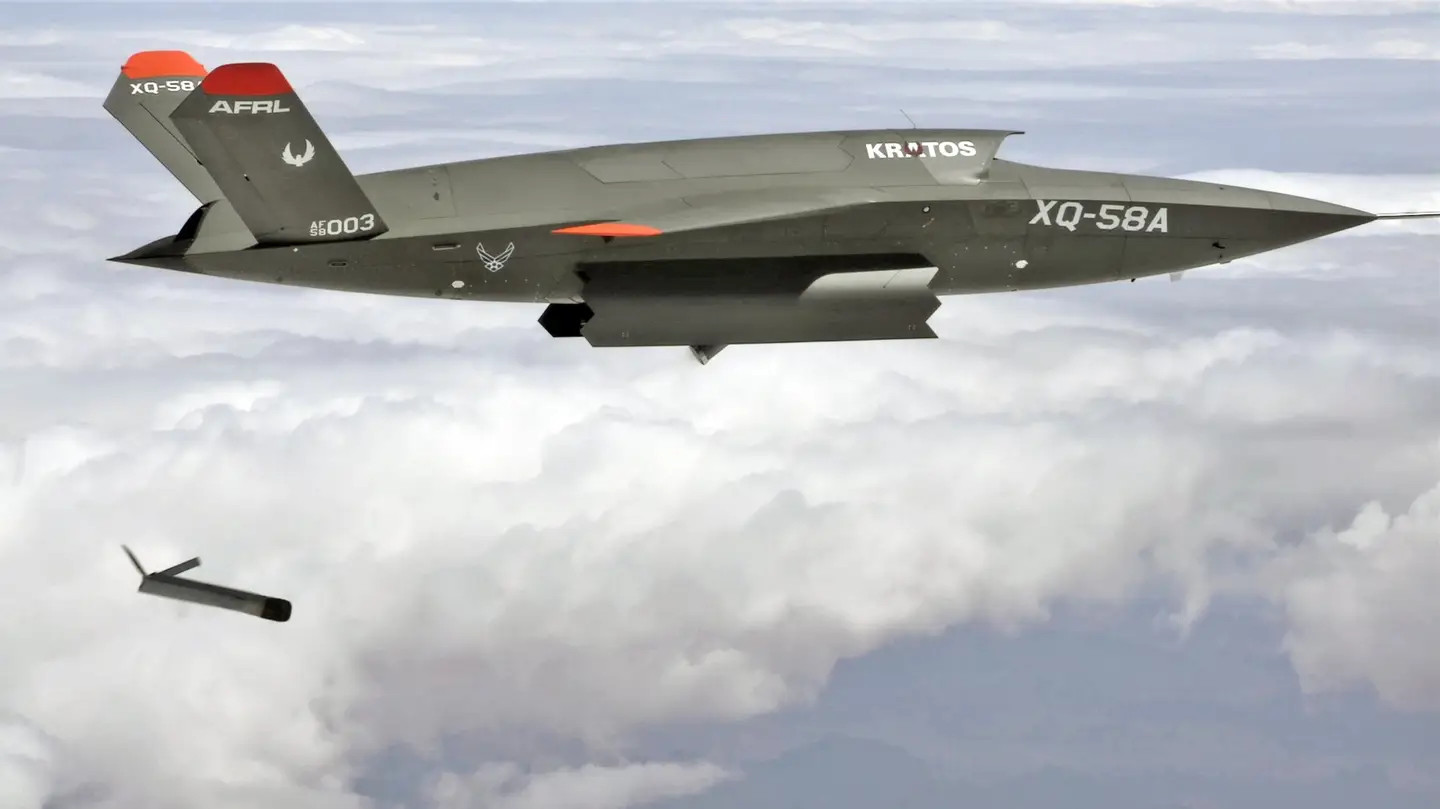
By comparison, among other things, the basic shape of the FH-97A’s fuselage, wings, and vertical stabilizers are all different, and it features engine intakes on either side of the fuselage rather than a single one top. The intakes look to be of a diverterless supersonic inlet (DSI) design, as well.
The model of the FH-97A also shows two distinct and exposed traditional engine exhaust nozzles at the rear, unlike the stealthy shrouded design seen on the original FH-97 mockup. The FH-97A’s exhaust arrangement could, of course, change as time goes on. We’ve already seen examples of advanced Chinese, as well as Russian, uncrewed aircraft designs that started out with very non-stealthy exhaust systems, but with clear intentions to eventually switch to stealthier configurations.
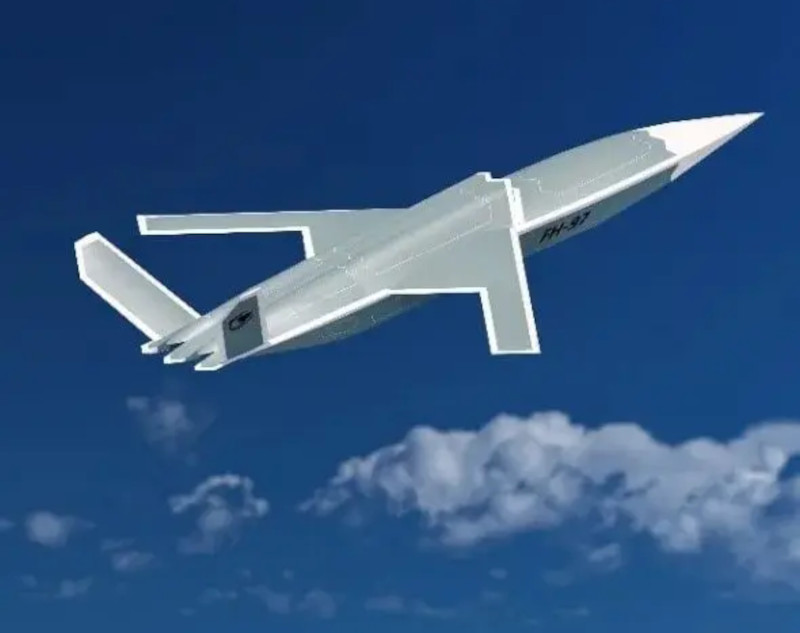
Beyond the core design’s differences compared to the FH-97, the FH-97A’s new overall planform, especially the nose section with its downward slant, is extremely reminiscent of Boeing Australia’s MQ-28. It’s not clear if the FH-97A also has tricycle landing gear and is expected to take off and land from conventional runways like the Ghost Bat. The original FH-97 looked to at least be designed around a ground-based rocket-assisted takeoff concept involving a static launcher like the XQ-58A. The Kratos’ Valkyrie is recovered at the end of a sortie via parachute.
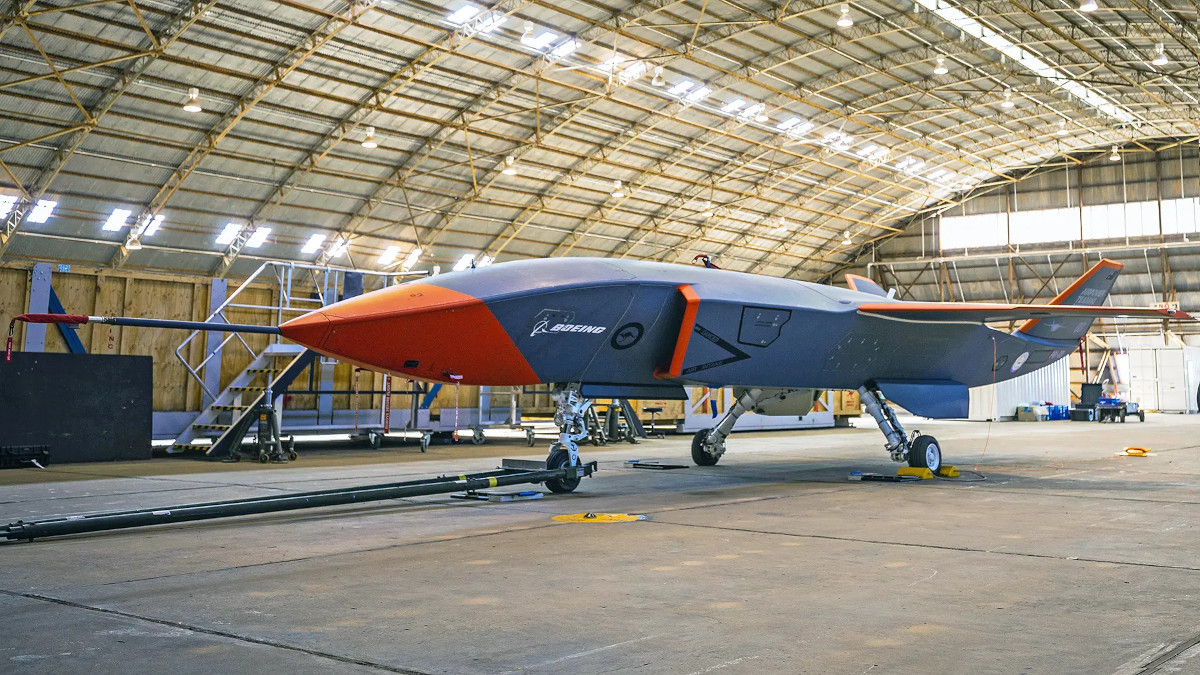
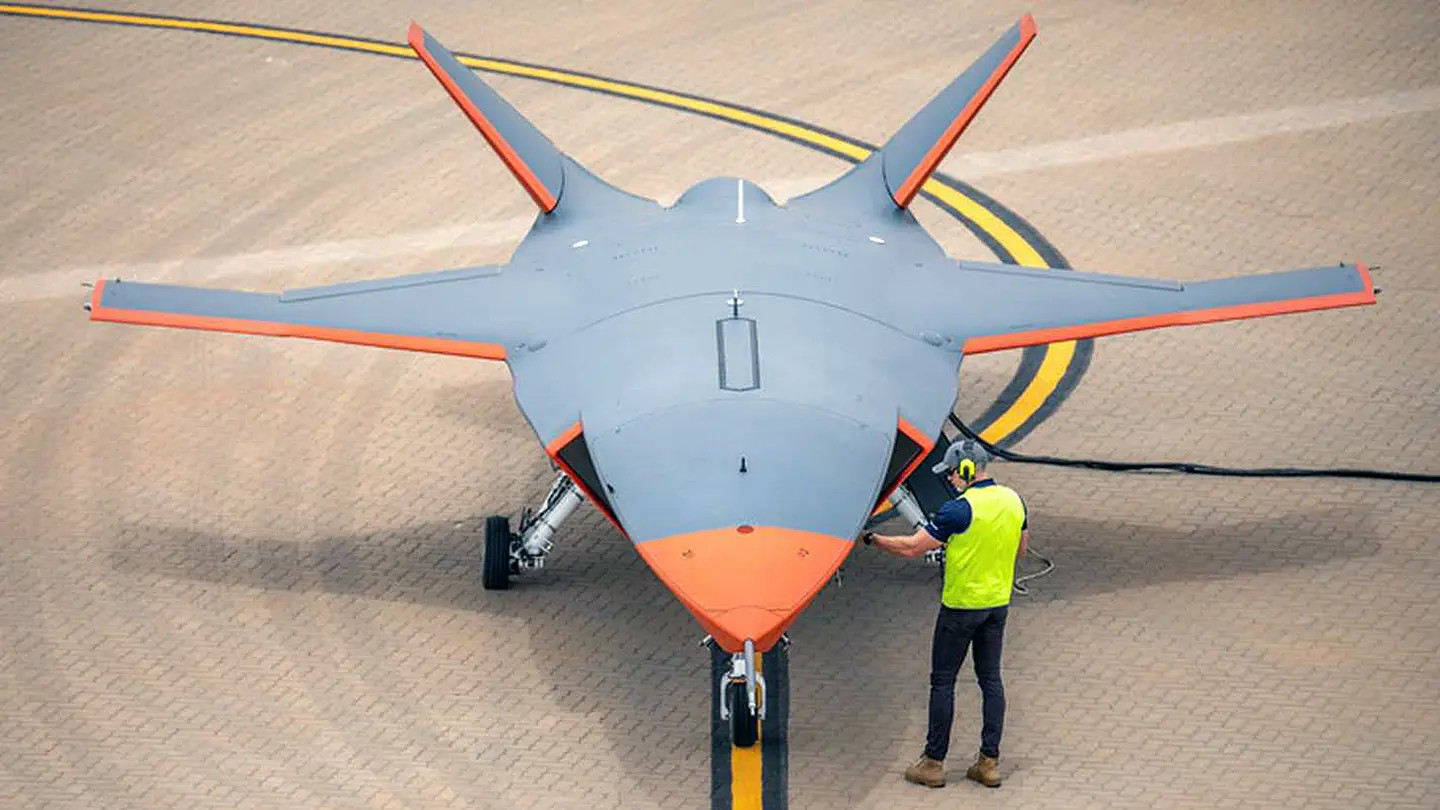
From what we can see in the pictures that are circulating online now, the FH-97A differs from the FH-97 in significant ways when it comes to specific systems and capabilities, too.
Perhaps most immediately eye-catching is the repositioning of what is likely intended to represent an electro-optical/infrared sensor installed inside a stealthy gold-plated windowed enclosure, broadly akin to similar systems on the U.S. F-35 and Chinese J-20 stealth fighters, from underneath the nose to on top of it. The model’s nose itself looks to depict a serrated low-observable radome.
The relocated sensor enclosure also looks to be larger on the FH-97A. Moving the sensor might reflect a shift in focus from air-to-ground missions to air-to-air ones.
Interestingly, an infrared search and track (IRST) sensor system was also first spotted on top of the nose of one of the Royal Australian Air Force’s (RAAF) MQ-28s earlier this year, as seen in the picture below.
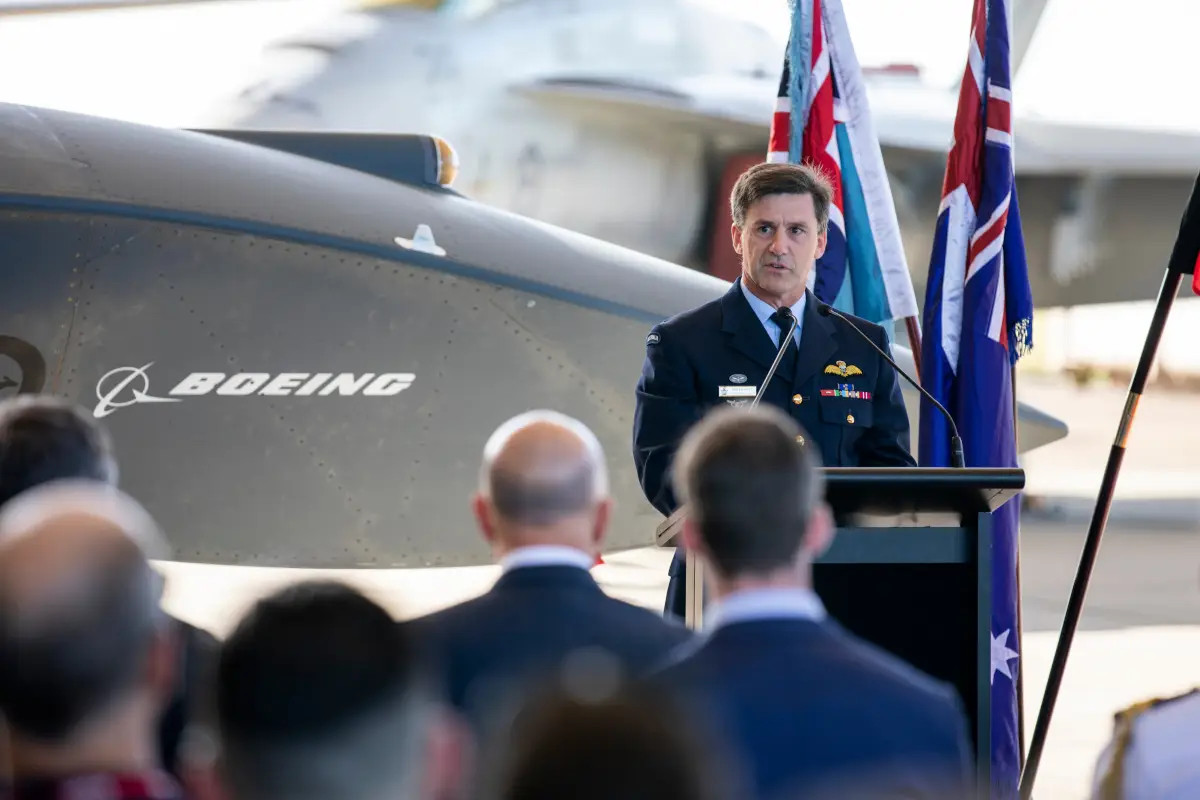
In addition, the FH-97A has a similarly gold-colored transparency on either side of the forward fuselage, as well, which would point to dedicated side-looking sensor systems. The gold color would seem to point to additional electro-optical/infrared systems, though small radar arrays are another, if perhaps less likely possibility.
An array of cameras could allow the drone to spot and track multiple targets from different angles, and do so in a way that is immune to radio-frequency jamming and is passive in nature, the latter feature helping to reduce the chance that opponents might know they have been detected at all. These are, of course, inherent benefits to IRST systems, in general, compared to radars.
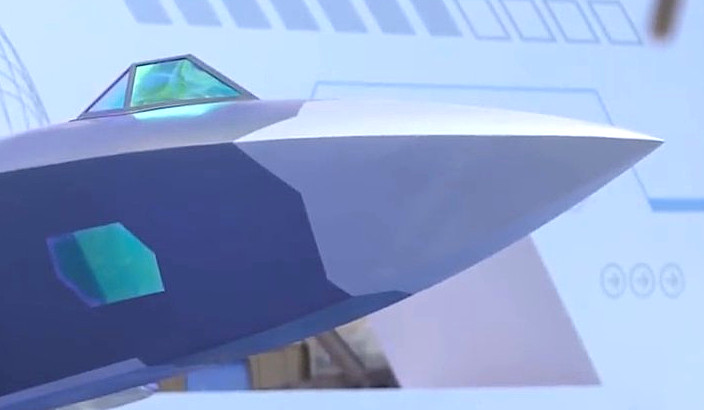
The FH-97A also appears to do away with the FH-97’s ventral internal stores bay for a pop-down launcher under the fuselage. It is not clear what this launch is intended to fire, but the mocked-up stores loaded on the model look as if they depict heat-seeking missiles of some kind.

If the FH-97A is indeed more focused on air-to-air combat, one potential option might be that these represent miniaturized interceptors intended to knock down incoming missiles, or even hostile aircraft. The U.S. Air Force, among others, has been notably interested in munitions in this category for aircraft self-defense. In 2017, Northrop Grumman was also awarded a patent for a broadly similar-looking anti-missile system for stealthy aircraft, which you can read about here.
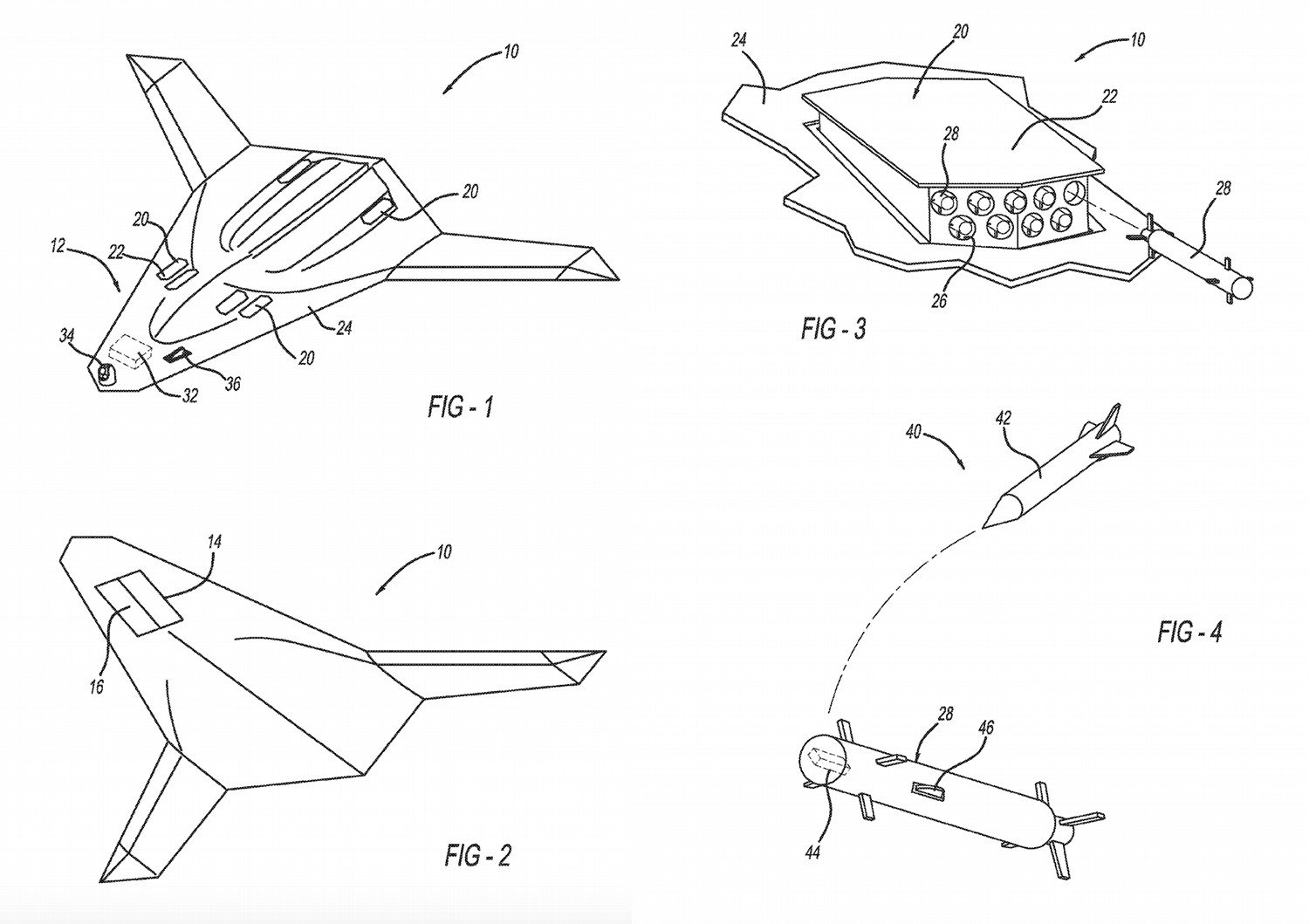
This is just one possibility and if the launcher is intended to be multi-purpose, it could launch various types of other payloads, too, including non-kinetic systems designed to act as decoys or stand-in electronic warfare jammers or even small drones.
However, small anti-missile interceptors could make particularly good sense when paired with a platform equipped with an array of electro-optical and infrared sensors to give it a high degree of at least localized situational awareness. Such a drone would be well suited to providing a layer of close-in defense, especially for critical, but typically more vulnerable aerial assets, such as aerial refueling tankers, cargo aircraft, and intelligence, surveillance, and reconnaissance planes, that would be primary targets for any opponent. This could extend to escorting fighters or other drones and providing them close-in defense as part of a larger manned-uncrewed team mix, too.
Whatever the FH-97A’s exact intended features and capabilities might be, the clear ‘inspiration,’ if nothing else, the design has taken from the Ghost Bat points to the drone being primarily intended for a loyal wingman-type role working together with crewed platforms. It is no secret that the People’s Liberation Army is pursuing crewed-uncrewed aircraft teaming concepts. There has already been speculation that another previously unseen drone design that has also emerged at Zhuhai could be intended, at least in part, as a pilotless companion to the J-20 stealth fight.
The War Zone, among others, has explored in the past how the two-seat J-20B could be ideally suited to the drone-controller role, with the additional crew member in the back seat being able to take on those tasks. Last month, China’s state CCTV-7 television channel, which is focused on PLA-related programming, broadcast a special focused on future crew-uncrewed aircraft teaming capabilities that included a depiction of a J-20B operating together with four stealthy GJ-11 Sharp Sword uncrewed combat air vehicles (UCAV).
That same program featured computer-generated renderings of an H-6K missile carrier aircraft acting as an aerial launch platform for LJ-1 drones. The LJ-1 was at least initially intended as an aerial target, but is also designed to be readily reconfigured into a lower-end tactical uncrewed air vehicle, as you can read more about here in this recent War Zone report. The FH-97 and FH-97A would seem to be positioned to offer performance and capabilities somewhere in between something like the LJ-1 and higher-end designs like the GJ-11.
In addition, though the exact relationship, if there is any, between the FH-97A and the MQ-28 is unknown, the Chinese government does have a long history of engaging in industrial espionage to support military and civilian aviation programs, among other things. Regardless, the clear similarities between the two designs, at least externally, only underscore that China’s state-run aviation enterprises, which have made significant strides in their internal capacity to design and produce advanced uncrewed aircraft in recent years, are still equally happy to take relevant influences from other sources.
The Ghost Bat is likely high on the PLA radar, in general, given that the RAAF, a major prospective opponent in a high-end future conflict in the Pacific, is pushing ahead with plans to acquire a significant fleet of these drones for use in combat operations. That the U.S. Air Force, one of the PLA’s top potential adversaries, is now at least testing an MQ-28 is unlikely to have gone unnoticed by Chinese officials, either.

All this notwithstanding, it is important to note that, at least so far, there are no indications that the FH-97 progressed beyond the mock-up stage and it remains to be seen whether or not the FH-97A will become more of a reality. It is unclear if another model or mockup of the initial FH-97 design is on display at Zhuhai this year or not, too.
If nothing else, the appearance of the FH-97A at Zhuhai this year further underscores that the PLA is increasingly looking at an uncrewed future with multiple tiers of capabilities that could work closely with various types of crewed aircraft. It will be interesting to see if this capability materializes and if so do we end up with both FH-97s or just one?
Contact the author: joe@thedrive.com
